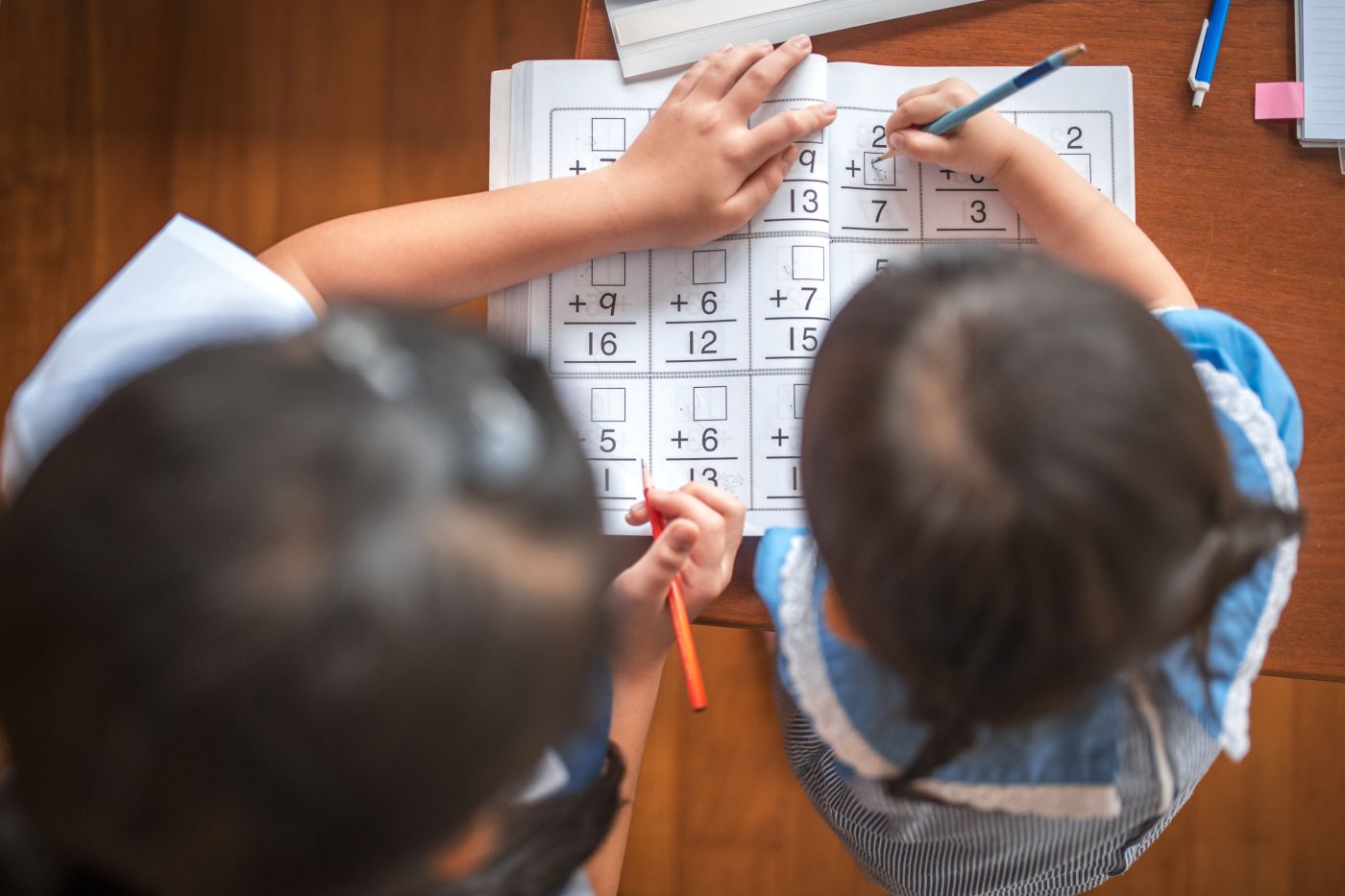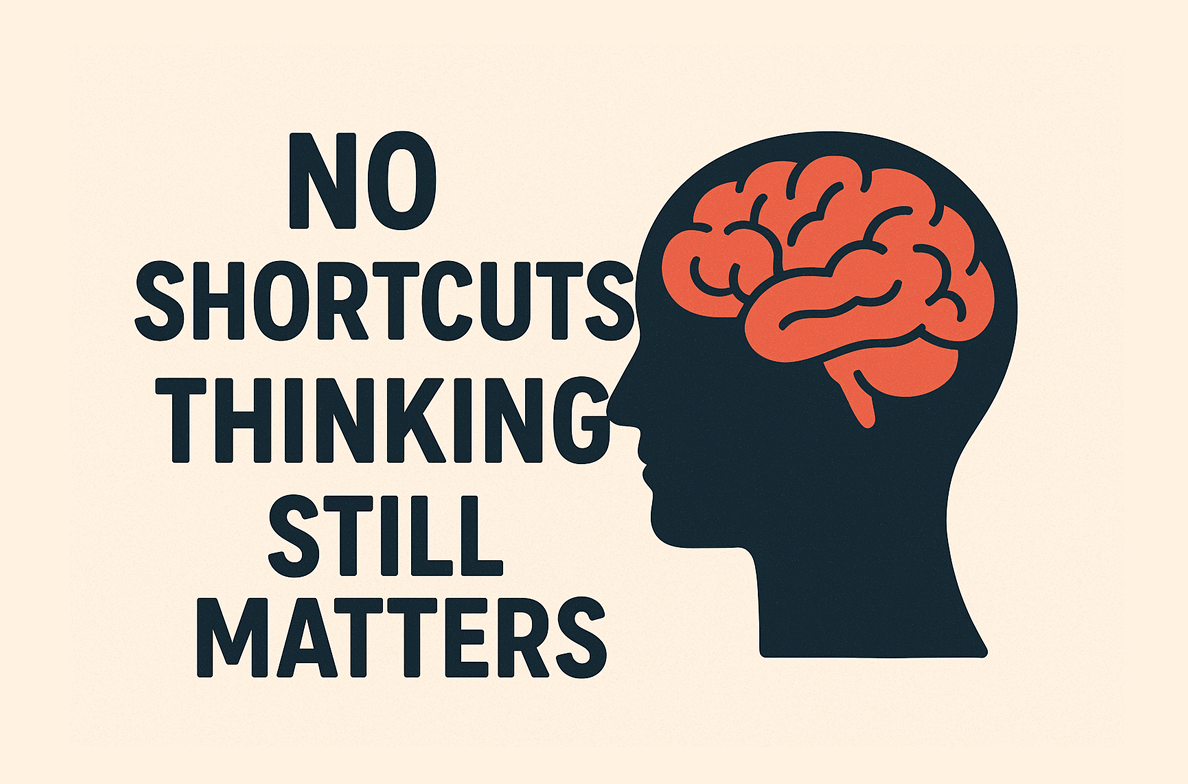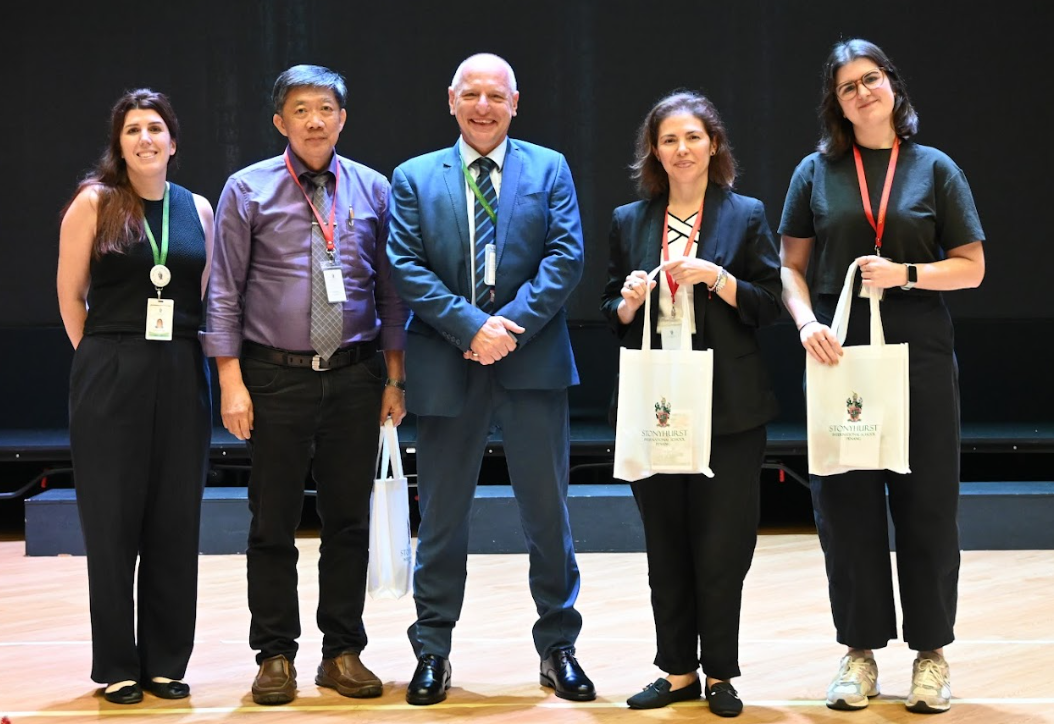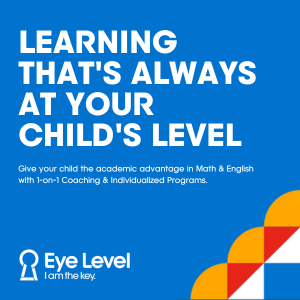Written by Choo Li-Hsian.
Statements like these are commonly heard in conversations. Until I had children, I used to feel the same way about math, too. For many of us, math was probably not easy and something we were not terribly fond of in school. Learning math was most likely mixed with fear and a fair amount of frustration.
So, if we have negative feelings about math, how can we keep from passing those on to our children? How can we help our children love math, even when we don’t? By diving a little deeper into the subject and trying to understand it a little better. We may even discover a new found appreciation for math along the way. I know it is possible, because I did!
Show children how math is all around us and in everything we do
 Credit image: twoboysanddad.com
Credit image: twoboysanddad.com
We (and our children) may fear math, but we probably enjoy things like art, music, poetry, watching movies, sports and spending time in nature. We all love to travel, going to new destinations by plane or car and admiring the amazing architecture of famous structures like the Petronas Twin Towers. Some children may enjoy chess, but most love playing Minecraft or Roblox.
Do you know that all these things are powered by math?
Children may be surprised to learn that math is used a lot in art. Show them how geometry (the study of shapes and spaces) was originally used by classical artists in the 1400s to create the illusion of 3D depth in 2D paintings. They applied an effect called the “Vanishing Point” so objects near this point seem far away. For compositions in paintings or photographs, many artists also use “The Rule of Thirds”. When people look at an image, their eyes do not go to the centre, but to the points where “The Rule of Thirds” lines intersect. So, artists often place the most important parts of an image on the lines or intersections.
Many children also love music and poetry, but may not realise that mathematical elements may be found in these subjects, too. Music has been described as “the joy that people feel when they are counting and don’t know it”. Most music and poetry is based on repeated number patterns. For example, the repeating pattern of long and short notes in a music piece forms its rhythm. Different music styles and poems have different rhythms! Fractions are also used in music as musical notes are divided into bars or measures. Some bars have many quick notes, some have only one or two long notes.

Credit image: iStock
What do all mathematicians have in common? Well, they study patterns. To be good at games like chess, you also have to understand the many “patterns of play” found in the game. Many maths concepts are used in chess. Moves on a chess board use a coordinate system, and geometric concepts like files, rows, diagonals. Chess requires constant calculation, as you need to predict and anticipate consequences of your moves. It develops visual memory and spatial reasoning skills. Many children today also play online games like Roblox and Minecraft. The system of binary numbers, invented by Gottfried Leibniz, is what made modern computers, smartphones and digital technology possible. Computing memory is made up of switches that can either be on or off. We use 1 to tell the switch to be on and 0 to tell it to be off. All data can be converted into binary numbers. So, the rules of maths lie behind every computer game you have ever played. Maths principles like geometry, vectors, transformations, matrices and physics are used to code these games. Today, code is also used in passwords and ciphers to protect our personal information online.
All families love a good movie but movie scenes would look boring if all the shots in each scene were taken from the same angle. So, in any scene, a director might use several different camera angles. However, every time the camera angle changes, the two characters in the same scene must always have the same left/right relationship with each other. That way, the shot does not confuse viewers! The director ensures this by following a mathematical “180 Degree Rule”.
In sports, jerseys and scoreboards have numbers but math is also used in other ways. Basketball players need to master angles when shooting the ball. The ball follows a special curve called a parabola. The bigger the angle, the easier it is for the ball to go through the hoop. Angles are also important in golf and figure skating. For football and baseball, coaches and players analyse data to predict what will happen, decide which players to use and find the best ways to win.
Love nature and taking hikes? Well, the numbers in the special Fibonacci sequence often appear in nature: in parts of a pine cone, petals of flowers, seeds at the centre of a sunflower. The “Golden Ratio” shows us how you can draw a special spiral from a series of golden rectangles of increasing size. Spirals are a simple way for things in nature to grow: snail shells, flowers, plants, and even hurricanes and galaxies. Animals come in all shapes and sizes, but many have bodies that show symmetry like bilateral symmetry in a butterfly, radial symmetry in a starfish. Fractals are shapes that repeat themselves at different scales, forming complex patterns like tree branches, fern leaves or even broccoli.
Many of the world’s most important inventions and scientific discoveries are also based on math. The transportation that we use and their navigation systems could not have been invented without math. Golden triangles are used in the design of ancient Greek temples, also beautiful modern buildings. Engineers today also use triangles, another tough structure, in many bridges, buildings and other structures like the ancient pyramids!

My journey of learning math (and in my case, re-learning) with my children in this way inspired my son to make this learning breakthrough video and present it as a public webinar for his international school.
Show children how math powers daily life and how we use it every day (sometimes without even realising it!)
Actually, every day we use math, and think like mathematicians without realising it.
Math teaches us to reason. Explain to children that they are actually using math when trying to convince us that they have not used up all their Saturday iPad time because the 4 videos they watched did not add up to their given 60 minutes quota. Also, how we use math in turn to remind them that they need to add in time taken searching for the videos!
Help children see how we think like mathematicians when we are shopping, deciding what to buy based on price and size, and counting the money needed to pay for our purchases. We apply math when we measure ingredients to cook a meal or bake a cake, and follow steps in a recipe to reach a desired outcome. Or even when thinking about how to divide that cake equally between all our family members, and when we fight over who got the bigger piece!
Share with them how math is being applied in real life when we look at the time to see when we have to go to our next class or appointment, when we fill up our car with petrol on the way to the park, when weighing ourselves or when we are measuring the space (area and perimeter) in our garden to decide how many vegetables we can plant.
Math is really indispensable to daily modern living.
Arm children with good resources and support to help them learn and understand math in a fun and interesting way
I am still old-fashioned to some extent and believe that good arithmetic type math drills done daily are still important to build a strong math foundation, good homework ethic and a positive attitude towards math. So, my children started with and are still continuing with Kumon sessions for these reasons. Annually, we also sign up our son for the Kangaroo Maths Competition as the questions that emphasise math language mastery and logical reasoning expose him to a different kind of math.
However, I do believe the right resources and support can further complement these foundation building drills. These will interest and inspire our budding young mathematicians, encouraging them to actively learn math concepts wherever they are. Look for good books that display practical applications for the math children learn in the classroom, that demonstrate that math goes beyond just paper-and-pencil exercises and into everyday life. Below are some recommendations. There are many more if you search for them!

Maths Books
“The Amazing World of Maths” series by Nancy Dickmann talks about how math is found in art and sports, nature, science and even space. "What's the Point of Math" is another good book. The ”Real World Maths” blue and orange level workbooks, many written by Wendy Clemson and other authors, present a clever and challenging approach to math by categorising real world math problems into topics like “Win a Grand Prix”, “Be a Stuntman”, “Solve a Crime”, “Ocean Giants”, “Treasure in the Jungle”, “Journey to the Moon” and others. A similar series is the “You Do the Maths” workbook series by Hillary Koll which shows children the math needed to “Launch a Rocket into Space”, “Design a Skyscraper”, “Fly a Jet Fighter” and also “Solve a Crime”.

Most children love creating art. So, do help them discover how math can be artistic and art can be mathematical with these awesome activity books: “This is Not a Maths Book: A Smart Art Activity Book” and “This is Not Another Maths Book”. They are full of fun drawing challenges with a mathematical basis. At their international school, my children have also done art and maths type related exercises and projects like calculating the angles in the letters of their names, listing all the maths related to their identity (“Maths About Me”), using “habifractions” to classify different animals in a given habitat, creating art patterns using tessellations and even designing a modern home whilst highlighting the use of angles, geometric shapes and coordinates.

Designing a modern home
If your child loves to read, you can also find many good children’s picture books on the topic. The annual list of Mathical Book Prize Winners is a good place to start as it is an annual award for fiction and non-fiction books that inspire children of all ages to see math in the world around them. Picture book blog posts like this one by the Pragmatic Mom and also this one by the Development and Research in Early Math Education group are also good sources of such book titles. Just search for “math picture books for kids”.
For fresh ideas on how to teach or just talk to your children about math, you can also look into many parenting blogs with some maths focus like The Measured Mom or Talking Math with Kids. Or read up books by award-winning math educators like Eddie Woo whose book “Woo’s Wonderful World of Maths” is touted as “twenty-six bite-size chapters on the hidden mathematical marvels that encrypt our email, enchant our senses, and even keep us alive - from the sine waves we hear as “music” to the mysterious golden ratio.” There are other insightful books like Easy as Pi by another maths teacher Liz Strachan that make math more approachable to parents, teachers and layman learners like us.
Other resources that put an interesting twist to traditional math concepts include Twinkl Malaysia's worksheets and The Life of Fred series. In our house, we also like the "Maths No Problem" series of books that are based on Singapore Maths but adapted for the UK and overseas markets. For every concept, the child is shown is different ways he or she can obtain an answer. For example, how addition can be done by counting items or pictures, using a number line or number bonds.
Reinforce to children how math is helping them build important skills that can help them lead better lives

Credit image: iStock
Of course, math is not always easy to do, sometimes the problems are difficult to solve. When my children are doing their math homework, especially when they are struggling through a particularly difficult problem, I emphasise that math is indirectly teaching them how to be persistent in solving problems, and how this skill will be very useful to them in real life. I also point out how even though there is one right answer in math, there are many ways to find that answer. So, math also teaches them to be creative and resourceful as well as to find the courage, confidence and curiosity to approach new and difficult things in a positive way. We discuss how learning math helps us cultivate good qualities like having an enquiring and open mind and being willing to take risks.
Through their daily math practice and discussions with me, my children can see for themselves how practice and effort trumps so called “talent” or innate ability, that you can get better at doing something if you work at it. They also learn how to “eat an elephant one bite at a time”. When they encounter a difficult maths problem, they learn not to be scared. They know that they need to break it down into smaller problems and solve the parts that they know first, then slowly work through the more difficult parts. Remind them that if they really need, they can still always ask their teacher or parents for help.
Remind your children to be calm, open-minded, positive, flexible and to not give up easily. For example, when solving a multiplication problem and they don’t know their times tables well, they can always use the repeated addition method. It may take longer but they can still get the answer!
The ultimate challenge for you and me, as parents, is to change our own minds on what math is and to model a persistent enjoyment of math. Let’s not look at math as something that is out to frustrate us, but as an integral way of life and a useful survival skill. If we are calm and cheerful when faced with mathematical challenges, we will certainly pass that positive approach onto our children.


































